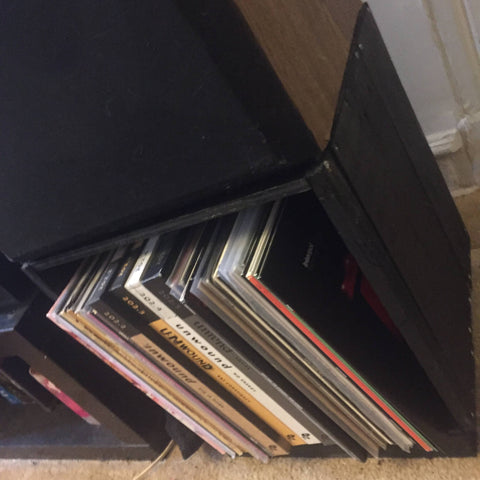We're music people at Imperium, and we collect vinyl. Sure, we use streaming services (here's what we're listening to lately). And yeah, we have home assistant speakers too, but what we really love is our turntable and tower speakers. We know the argument that vinyl just sounds better is sometimes a bit overblown, sometimes contains some scientific falsehoods, but we still think listening to a record is much more of an experience than the convenience listening of streaming. Cleaning the record, knowing we have to get up to flip a side, and actively listening are all the parts of vinyl we love the most.
But you know what? We discovered something talking to a friend who happens to be a mastering engineer that has improved our listening experience when we're in front of that stereo a thousand fold, and you'd never really think of it. The addition of a speaker stands. "Why," you may ask?
The Science of Sound

Sound travels as a wave, just like ripples in a pond, and it reverberates through certain materials in not ideal ways. Speakers on your floor — unless it's concrete — reverberate and resonate at frequencies the engineer and artist didn't intend. So your record sounds different than it would if the speaker was — ideally — suspended in midair and only moving air with the sound it produces. But we sure aren't hanging our 2 and a half foot tall speakers from the ceiling and we doubt you are either. The gist is that you want to isolate the speaker from surfaces on which the sound can reflect and distort.
Why do you want it to do that?
Because the sound in typical music is intended to be directed to you, not through the floor, your book shelf, or your entertainment center. Sure, Dolby 5.1, or 7.2 or 9 point whatever system is great for home theatre; it's not ideal for typical music. And while quadrophonic stereo systems exist and there are records out there that use it, it's rare and the same issues of the sound being directed into the floor are still a thing.
The sound coming out of your record and through your speakers was meant to be pointed in a particular direction. Here's a great primer that goes into much more detail than we will, but the basics are that sound reflects and reverberates. Doing the following will help you get the most out of your speakers:
- Get it off the floor
- Don't put it in contact with the walls
- Don't let it vibrate the whole room, just the air in the room
So what's the solution?
A speaker stand with sound dampening material in the base of the stand will help you get the most out of your records without engineering the whole room around the speakers.

A common material for this is sand because it's cheap and it's not solid, so as it vibrates with the sound your speakers are producing, it's also absorbing what's coming out of the bottom of the speaker so it isn't transmitted through the stand and into the floor.
The stand also helps you elevate the speaker so it's closer to "ear level" for listening, and gets it away from the wall.
There are plenty of stands on the market — we happen to like Crutchfield for most of our audio visual needs, and they're on it for stands too — but we have an ancient set of tower speakers that typical modern stands won't fit as opposed to the modern bookshelf speakers you're used to seeing. So being into the whole woodworking thing we do with our razor handles, stands, etc, we took it upon ourselves to build a set that fits our needs.
Plans Within Plans

We wanted a set that kind of matched our existing furniture, but was unique to the speakers, had sand in the base, and on the right-hand speaker had an open space to store the records we're listening to inside but also on display.
Our record player isn't in the same room where we store the bulk of our collection, but we wanted to make sure we stopped propping them up in front of the speaker while listening.
We measured the footprint of the speaker (15" by 11") and measured out a height that would accommodate a typical 12" LP (13"), and built our stands to match using reclaimed, sanded pallet wood we stained ebony, and then coated with a polyurethane protectant.
The base of the stand is literally a plywood box with a cavity inside that measures 14" by 10" by 1.5", then we filled that with play sand and sealed it with screws and silicone caulk to prevent the sand from leaking out. The top of the box is the base on which the records sit, and the sides are made of 14" cuts of pallet wood.
Even with pretty minimal woodworking experience, you can concept your own stand and wind up with a pretty cool, completely unique product. In our case, it improved the sound of our records, matched the furniture, AND helped us de-clutter our living room.
Give it a shot yourself, whether you buy stands or make them, and let us know how it turns out!
